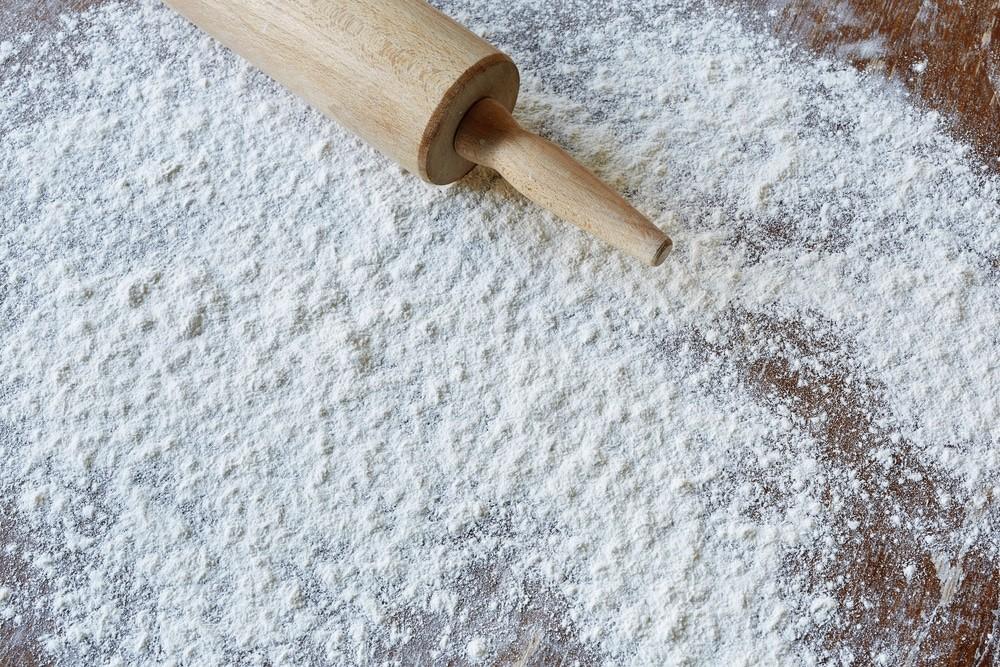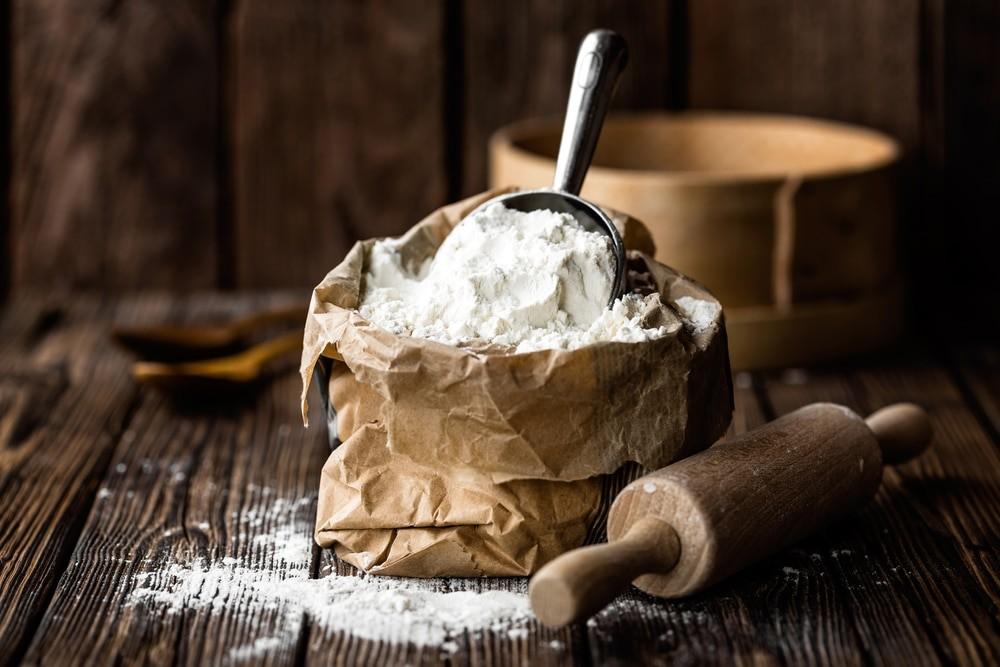How can you tell if flour is good or bad? Flour is one of the most essential ingredients most especially in baking and cooking other snacks and foods. Most of you may always have a stock of it in your house not noting how long you’ve stored it. But will it be fine to do so? Will that flour be safe? Does flour go bad?
These days, with the sudden change of temperature and other factors, it is important to secure whether the food eaten by your family is safe or not. Maintaining food safety would always start by checking the raw ingredients of a recipe.
How Long Does Flour Last?
A cook or even ordinary people should know whether a flour does go bad or not. Also, it is important for you to identify if how long it will last. Like any food products you purchase, a flour you bought should have a “best before date" written on it. This serves an indication or a raw approximation that indicates the best quality the flour could be in particular duration. This could often be a precise approximation. But it’s not the case every time.

Other factors affecting the shelf life of flour includes its types and method of storage. Shelf life refers to a certain period in which a product or goods remain free from any deterioration, sealable and efficient.
Though flour could be available in different types, most of them have a close similarity, which makes them last for a year. Storage will also play a major contribution to it. For whole wheat flour, which has more oil compared to others, it may easily lose its quality and just last about half a year.
Types Of Flour And How Long They Will Last
In A Pantry Sealed Or Not Sealed

Rice flour could last for 6 months up to 8 months.
Potato flour could last for 6 months to 8 months.
Self-rising flour could last for about 4 to 6 months.
Corn Meal Flour could last for 9 months to 12 months.
Whole wheat flour could last for 4 months to 6 months.
How To Tell If Flour Is Gone Bad?

What are the other indications that will tell you that the flour in front of you is bad? Below are the indications you must observe.
If a flour bug is already seen in it, it’s a sign to discard the flour. It looks like a moth larva, and whether you found it dead or alive, the four must be thrown.
Smell the flour and observe if there’s a spoiled or rancid smell. Throw it away if it is. A flour typical has a natural and fresh smell. It can also accumulate other odor from other food placed near it, but this doesn’t mean that the flour is bad.
Whole Wheat Flour – When Does It Go Bad?
This is made from the wheat whole kernel. The thing that makes the whole wheat flour nutritious is the same reason why it’s quite hard to store. Within this whole wheat grain is the wheat germ that consists of a healthy yet perishable oil. When this oil is exposed to air and temperature, the flour will suddenly become rotten.

Keeping it in cool temperature will extend its life while keeping it at room temperature will lead to early spoilage. Most of your senses should be used to check whether this flour has gone bad. Follow these steps:
How To Tell If Wheat Flour Is Gone Bad?
- STEP 1
- STEP 2
- STEP 3
Get a handful of this flour and inspect if there’s a change in texture or color. A fresh wheat flour typical has a smooth texture and tan color (light). If it’s a whole wheat flour that has gone bad, you’ll observe that it begins to crumble and darken.
How To Store Flour
Proper storage could extend the flour’s shelf life and stop it from going bad. Sealed container, which is a dry airtight one, will be best for flour storage. Usually, flour packaging is made up of paper and there’s no problem with it as long as it’s tightly covered. But you could also use flour jar for storing it.
How To Best Store Flour?

Storing the flour in your freezer or fridge will extend its life. When doing this, transfer it to an airtight container to avoid contamination of odor from other food.
Storing the flour in a cool room will make it last longer compared to storing it in a warm place.
To preserve the wheat flour longer, you must store it in your fridge. On the other hand, other types of flour can safely be placed in your pantry just make sure that the flour package is tightly closed.
If the flour package is open, it’s better to transfer it into a reliable container or packaging. When the flour package is moist, the flour does go bad quickly. This time, discarding the package is the best option.
If it’s properly stored, you cut the food expenses, eat healthier and less environmental waste.
Flour Storage Tips And Tricks

Buy sufficient amount of flour you need for cooking or baking. If you don’t need flour so often, you can prefer to buy a small pack of it to avoid flour waste and insufficient storage space.
Choosing a square flour container could consume about 25% less of the space compared to the round containers. Minimizing storage space is a lot more convenient so it’s better to save square containers for your flour.
A Few Interesting Facts About Flour
Be equipped with some of the most interesting facts about flour. Some are as follows:
One 5 lbs. flour bag is equivalent to 17 and ½ cups
The self-rising flour is a mixture of a regular flour, salt, and baking powder. The addition of baking powder makes it have a shorter lifespan compared to other types of flour.
Flour is a type of powder produced by grinding uncooked seeds (like cassava) and cereal grains.
When you mixed flour with equal portions of butter and then heated, you’re likely to produce traditional roux.

March is interestingly the National Flour Month.
One whole wheat grain could create more than 20,000 flour particles.
Kinds of flour include all-purpose flour, cake flour, Self-rising flour, Pastry Flour, Bread flour, and whole wheat flour.
Bleached is a term that pertains to a flour that has been chemically bleached to whiten and enhance its baking qualities. This occurs without any change in the flour’s nutritional value.

In general, the flour that is produced from a hard winter type of wheat consists of thirteen percent to fifteen percent of protein (gluten).
The bread flour is produced from a type of hard wheat that makes an elastic dough, which could expand very well.
Aside from corn, barley and rice, which is a usual source in making flour, potatoes, bananas, cassava, mesquite, and acorns could also be used.
The so-called “unbleached” flour is a flour that is bleached and aged naturally through oxygen. This is generally expensive and has more golden color. This is preferable to use in yeast slices of bread.
Flour, like any other foods, does go bad and this is normal. Its shelf life could reach about a year or more than half a year depending on the type of flour. But you can extend its life through proper storage.
Freezer or refrigerator storage will make the flour last longer. Avoiding moisture may also help in extending its shelf life. To preserve it long, proper storage is the key. The answer in question “does flour go bad?” is an absolute “yes”. The “best before date” in its package will help you to determine the estimated life span of flour. Learning about the interesting facts on flour such as knowing its kinds will assist you in preparing healthy and safe food like baked products. Also, knowledge on how to store flour for long term use will make a peaceful baking procedure. Learn more about it HERE.
Final Words
Everything you eat can make your health at risk that is why being cautious and knowledgeable on every food facts such as whether flour does go bad is essential. Foodborne diseases will be avoided if you can easily tell if a flour is good, spoiled of rotten.
You might also like : All You Need to Know Different Types of Pasta and When To Use Them
If you have any questions or additional ideas relating to the topic, feel free to comment down, and we’ll respond to it.


I think my flour went bad. Does humidity affect flour? I live in Cleveland Ohio and this summer has been VERY humid, rainy and I do not have AC.
I made dumpling, Hungarian, as I have made them a dozens of times. Eggs, flour salt, and put them by the taaspoon in Boiling water. It was all sticky, and would not clump into little dumplings!!!
I do think our horrible humidity this summer was the problem. NO??????